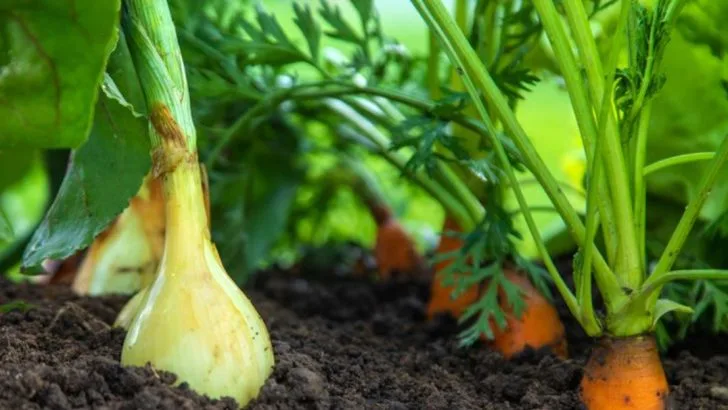Successful vegetable gardening isn’t just about planting, watering, and waiting. There’s an often-overlooked secret to achieving bountiful harvests: the power of companion planting. By thoughtfully pairing certain plants together, you can naturally enhance growth, deter pests, and improve soil health — all without synthetic chemicals. But beware: some pairings can have the opposite effect, stunting growth or inviting unwanted pests.
Over the years, both seasoned gardeners and scientific studies have uncovered fascinating interactions between plants. Some combinations foster mutual support, where one plant attracts beneficial insects or enhances the nutrient availability for its neighbor. Others, however, can lead to competition for resources or even the release of chemicals that inhibit growth.
In this article, I’ll share 11 tried-and-true companion plants that will help your vegetables thrive, along with 9 pairings to avoid if you want to prevent setbacks in your garden. Understanding these relationships can transform your planting strategy — and lead to a more productive, harmonious vegetable patch.
Basil & Tomatoes

Basil and tomatoes are a duo celebrated by gardeners for more than just culinary harmony. Basil’s aromatic leaves work wonders in repelling pests that often plague tomato plants. Their combined fragrances seem almost magical, creating a protective barrier for the tomatoes. Not only do they deter unwanted visitors, but basil also enhances the flavor of the tomatoes growing nearby. This time-tested pairing is a gardener’s secret weapon for robust tomato crops. Whether you’re planting in pots or a sprawling garden, placing basil near your tomatoes is a strategic move laden with benefits.
Carrots & Onions
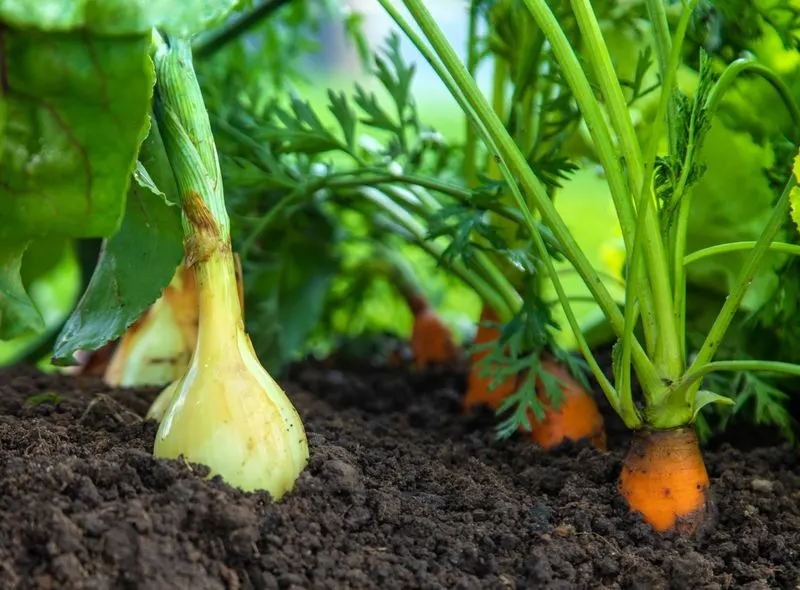
In the world of root vegetables, carrots and onions form a partnership that’s as practical as it is effective. Onions, with their pungent aroma, help keep carrot flies at bay, while carrots reciprocate by enhancing the growth environment. Each plant’s unique characteristics complement the other, leading to healthier, more vibrant yields. This combination is perfect for gardeners seeking a low-maintenance yet productive garden bed. The synergy between carrots and onions is not only beneficial but also a testament to nature’s clever designs.
Corn & Beans
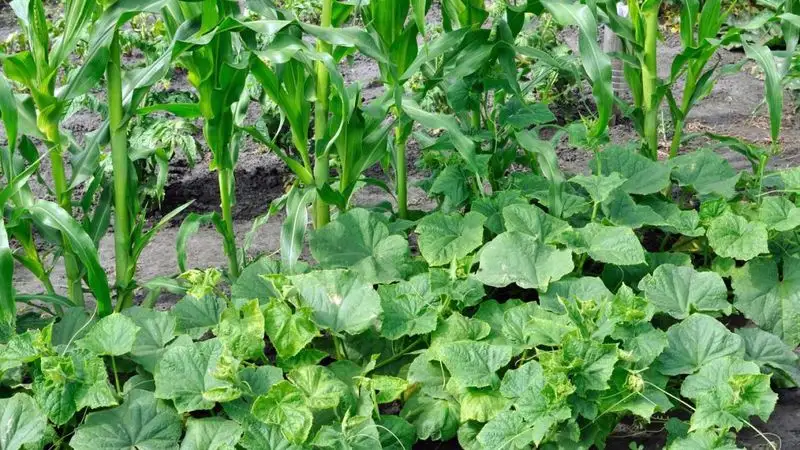
Corn and beans are the stars of the traditional “Three Sisters” planting method, revered by indigenous cultures. Beans, being nitrogen fixers, enrich the soil, which in turn benefits the towering corn. Corn provides natural support, allowing bean vines to climb towards the sun. This ancient technique of interplanting demonstrates mutual benefits that align with nature’s balance. Gardeners adopting this method witness increased productivity and soil fertility, a testament to the wisdom passed through generations.
Cabbage & Dill
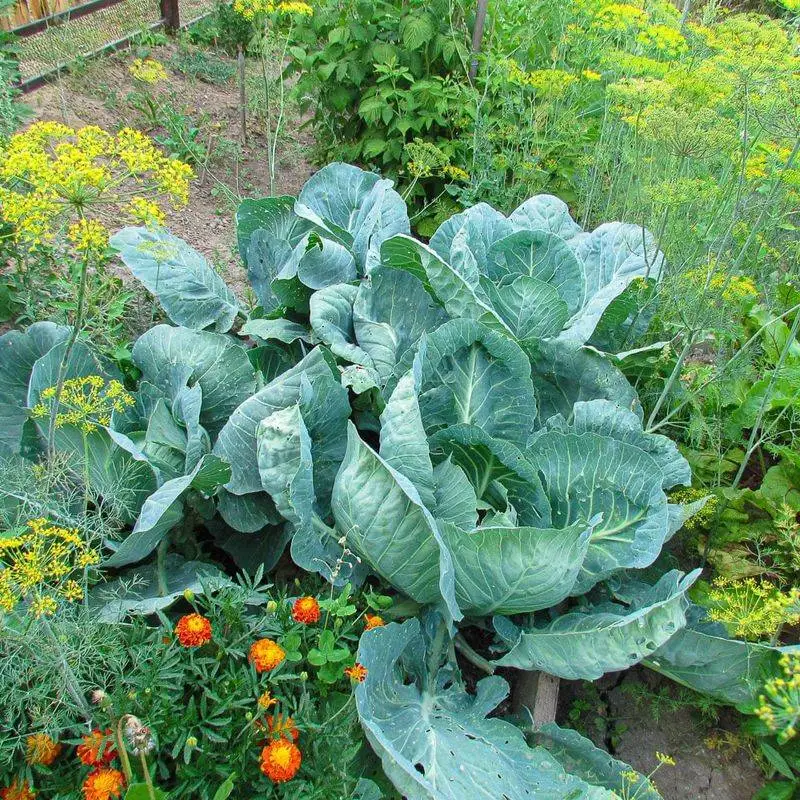
Cabbage and dill share a unique relationship that goes beyond the plate. Dill attracts beneficial insects like wasps and other predators of cabbage pests. Its delicate fronds complement the robust nature of cabbage, creating a visually pleasing garden scene. While dill provides protection, it also enhances the flavor profile of cabbage dishes. Together, they form a partnership that is both aesthetically and functionally pleasing, proving that sometimes opposites do attract in the botanical world.
Radishes & Spinach

Radishes and spinach are a fast-growing pair that excel when planted together. Radishes, being quick to germinate, help mark spinach rows and reduce weed competition. In return, spinach offers shade for radishes, preventing them from bolting. This efficient pairing allows both to flourish, making them ideal for quick succession planting. Gardeners can enjoy the rapid turnaround of radishes while waiting for the lush spinach to mature. Their synergy is a practical example of space optimization and mutual benefit.
Marigolds & Eggplants
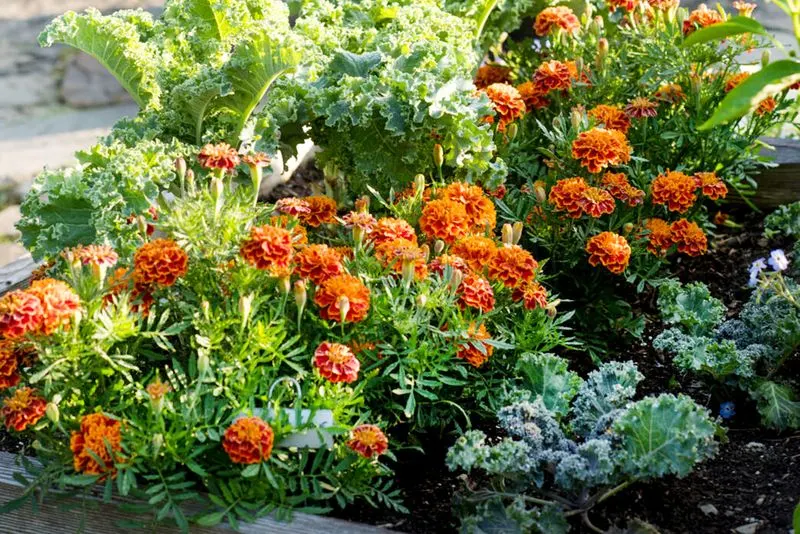
Marigolds and eggplants make for a colorful and productive garden duo. Marigolds are renowned for their ability to repel nematodes and other pests, safeguarding the tender roots of eggplants. This protective role allows eggplants to thrive without the constant threat of pest damage. Additionally, the vibrant marigolds enhance the garden’s visual appeal, creating a lively atmosphere. This pairing is perfect for gardeners who prefer a natural approach to pest control while maintaining an aesthetically pleasing garden space.
Lettuce & Chives
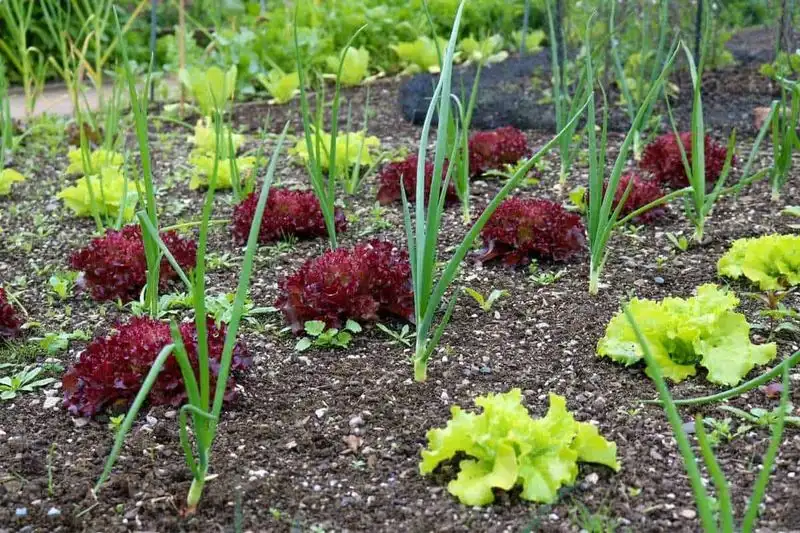
Lettuce and chives complement each other beautifully, both in the garden and on the plate. Chives, with their strong scent, deter aphids that often target tender lettuce leaves. This natural defense mechanism ensures that lettuce remains crisp and pest-free. In return, lettuce provides a lush, cool environment that benefits the growth of chives. Their combined growth offers a delightful mix of textures and flavors for any garden enthusiast looking to maximize both space and yield.
Peppers & Basil
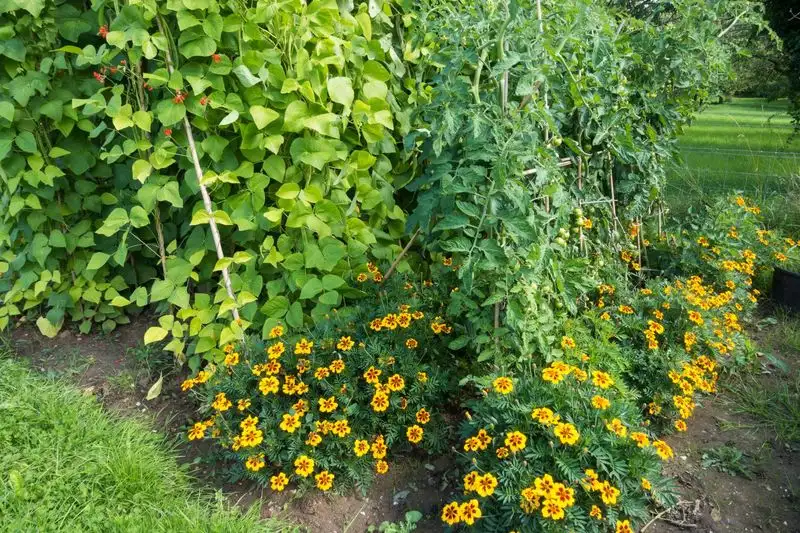
Peppers and basil form a dynamic duo in the garden, sharing similar growing conditions and mutual benefits. Basil’s aromatic presence can deter pests that commonly plague pepper plants, acting as a natural pest repellent. Moreover, the shade provided by pepper plants can benefit basil by preventing premature flowering. Together, they thrive, offering gardeners both aesthetic beauty and practical benefits. This harmonious relationship is perfect for those looking to enhance their garden’s productivity with minimal effort.
Squash & Nasturtiums

Squash and nasturtiums create a striking visual contrast while working together to improve garden health. Nasturtiums act as a trap crop for aphids, drawing them away from squash plants. This protective strategy allows squash to grow uninhibited by pest pressures. Additionally, the bright blooms of nasturtiums add a splash of color to the garden, making the space more inviting. This pairing is ideal for gardeners aiming to balance beauty with function, providing both a feast for the eyes and a safeguard for their crops.
Beans & Potatoes
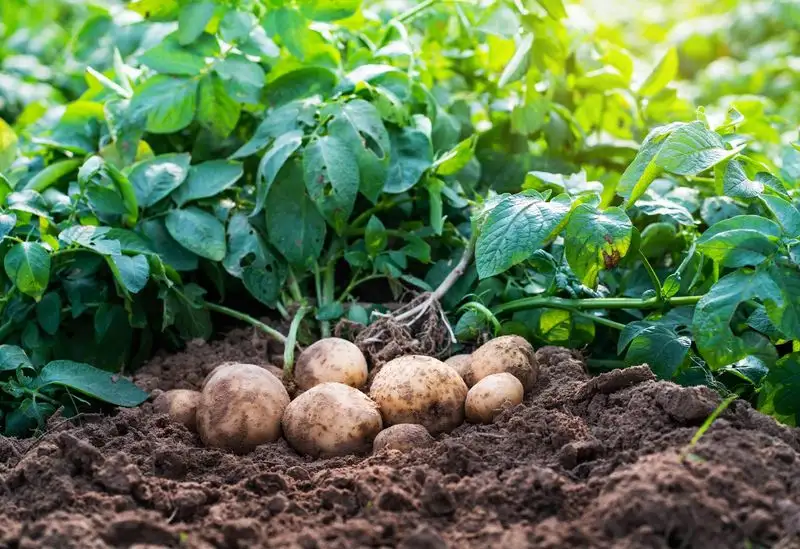
Beans and potatoes share a symbiotic relationship that emphasizes mutual support and resource efficiency. Beans enrich the soil with nitrogen, a nutrient that potatoes eagerly utilize. This nutrient boost leads to healthier, more productive potato plants. Meanwhile, the dense foliage of potatoes can suppress weeds, creating a cleaner growing environment for beans. This pairing exemplifies how thoughtful interplanting can optimize space and resources, resulting in abundant yields and a thriving garden ecosystem.
Mint & Carrots
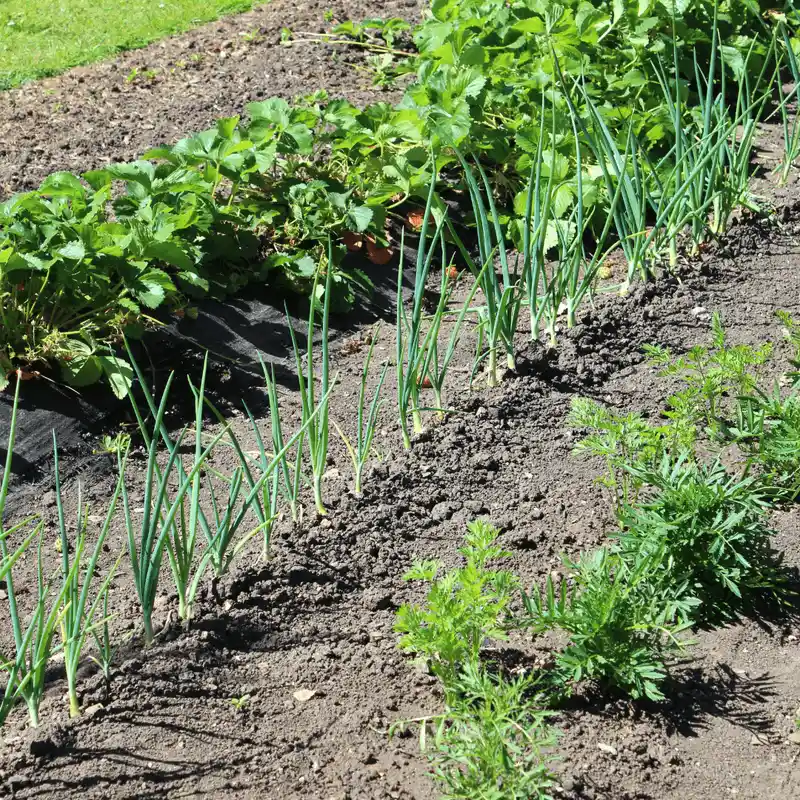
Mint, with its refreshing aroma, is an effective deterrent for carrot root flies, making it a useful ally for carrots. However, mint’s invasive nature requires careful management to prevent it from overpowering other plants. When contained, mint provides a protective barrier, allowing carrots to grow without the threat of pests. This unique combination benefits from strategic placement, showcasing the power of thoughtful gardening. By managing space wisely, gardeners can harness the benefits of mint while enjoying a bountiful carrot harvest.
Peppers & Fennel
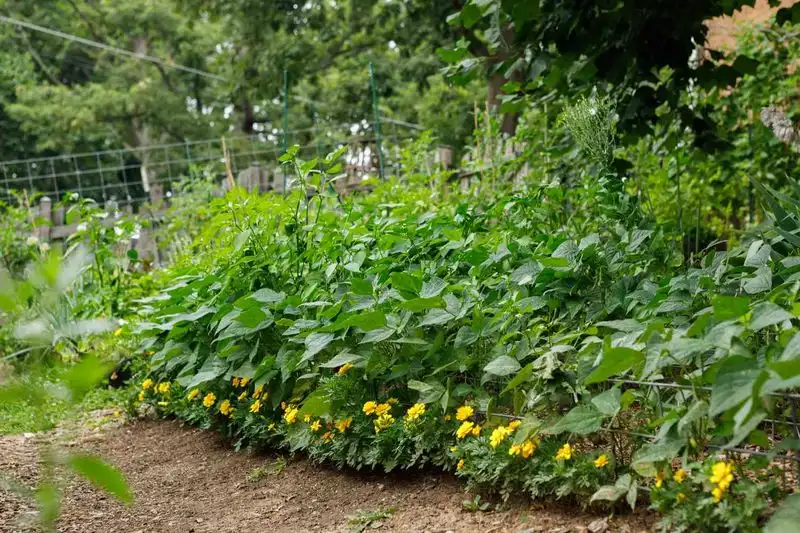
Pepper plants may benefit from many companions, but fennel isn’t one of them. Fennel releases chemicals into the soil that can inhibit the growth of nearby plants, including peppers. This allelopathic effect leads to stunted growth and reduced yields, making them poor companions. Gardeners should avoid planting these two together to ensure the health and productivity of their pepper crop. Choosing compatible plant partners is essential for maintaining a thriving garden, and understanding these interactions can help prevent common gardening pitfalls.
Carrots & Dill

While carrots and dill might seem like a perfect pair, their relationship can be quite the opposite. Dill, when mature, can stunt carrot growth due to its potent chemical emissions. This allelopathic action disrupts the normal development of carrots, leading to underwhelming harvests. Gardeners should exercise caution when planting these two together, ensuring ample distance is maintained if they are to coexist. Understanding the nuances of plant interactions can aid in avoiding such detrimental pairings, fostering a more successful gardening experience.
Cucumbers & Potatoes
Cucumbers and potatoes may share the garden space, but their relationship is far from harmonious. Potatoes are susceptible to blight, a disease that can spread to cucumbers and other plants. This susceptibility makes them a risky pairing, potentially leading to widespread garden issues. Careful planning is required to avoid these pitfalls, ensuring that each plant receives the environment it needs to thrive. By recognizing and respecting the unique needs of each species, gardeners can create a healthier, more resilient garden.
Tomatoes & Corn
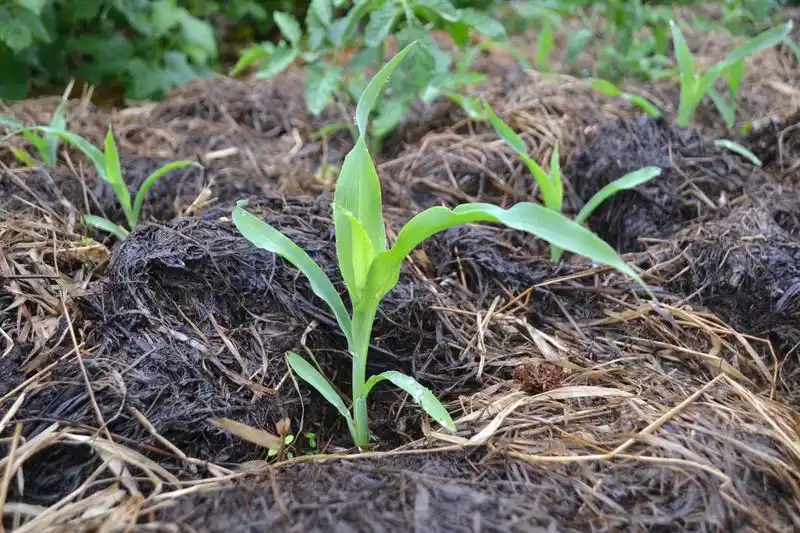
Tomatoes and corn might seem like they belong together, but in reality, they compete for the same resources. Both are heavy feeders, demanding similar nutrients from the soil. This competition can lead to nutrient depletion, affecting the growth and productivity of both plants. Additionally, corn can overshadow tomatoes, limiting their access to sunlight. Avoiding such pairings is crucial for maintaining a balanced garden environment. By selecting companions that complement rather than compete, gardeners can optimize their yields and enjoy a more harmonious planting experience.
Strawberries & Cabbage

Strawberries and cabbage might be at odds in the garden, as they compete for essential nutrients and space. This competition often results in stunted growth for one or both plants. Strawberries, being low-growing, can be overshadowed by the spreading nature of cabbage, limiting their sunlight exposure. Such pairings can lead to disappointing yields and a lackluster garden performance. Thoughtful garden planning, with attention to plant needs and compatibility, can help avoid these issues, ensuring each plant thrives in its designated space.
Garlic & Beans
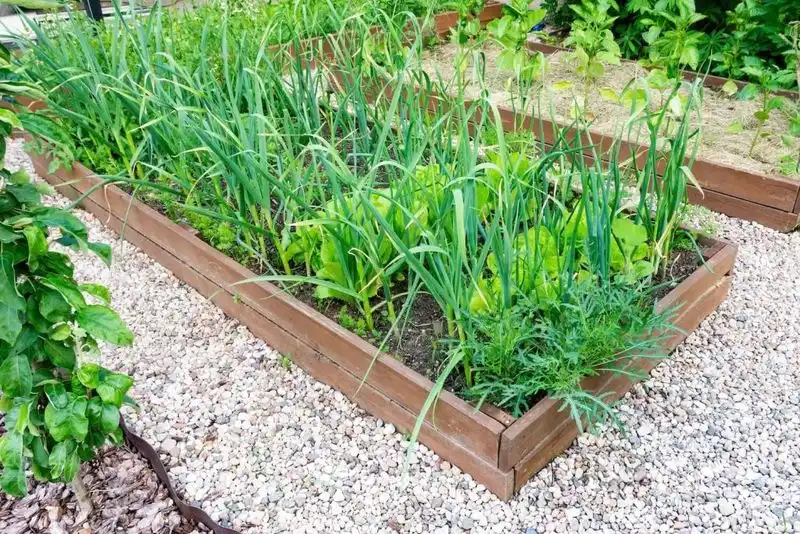
Garlic and beans are another pairing that gardeners should avoid. The strong aromatic compounds emitted by garlic can inhibit the growth of bean plants, leading to reduced yields. This allelopathic relationship highlights the importance of understanding plant interactions before planting. Maintaining a healthy garden requires knowledge and planning, ensuring that all plants benefit from their neighbors. By recognizing potential conflicts and avoiding problematic combinations, gardeners can cultivate a more productive and harmonious garden space.
Sunflowers & Potatoes
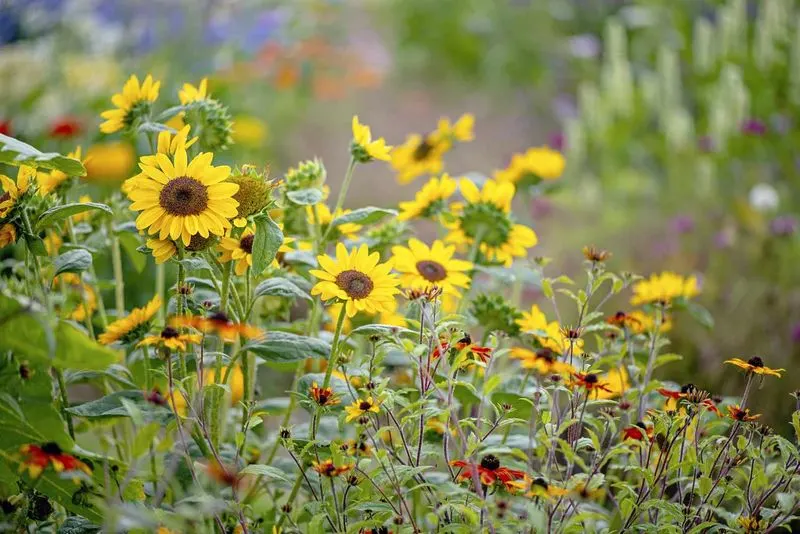
Sunflowers, with their towering presence, can overshadow potato plants, depriving them of essential sunlight. This competition can hinder potato growth, reducing the overall yield. Furthermore, sunflowers exude allelopathic chemicals that can impede the development of nearby plants. While both are valuable additions to any garden, they are best kept apart to avoid these issues. By carefully considering plant placement and compatibility, gardeners can ensure healthy growth and maximize their garden’s potential.
Pumpkins & Potatoes
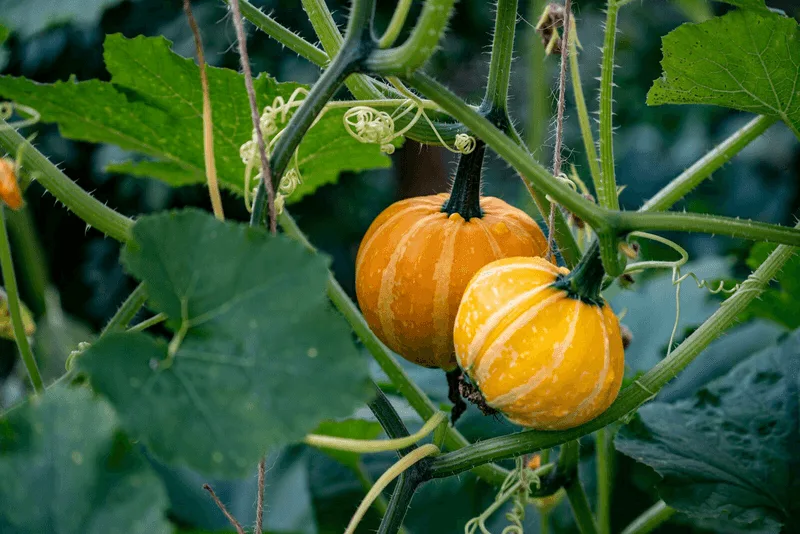
Pumpkins and potatoes might seem like garden allies, but their growth habits tell a different story. Pumpkins, with their expansive vines, can overshadow potato plants, limiting their access to sunlight and space. This encroachment can stifle potato growth, diminishing the harvest. Gardeners should be mindful of plant behaviors, ensuring that each has room to flourish. By separating these two, the garden can thrive without competition, showcasing the importance of strategic planting and thoughtful garden design.

